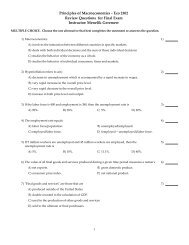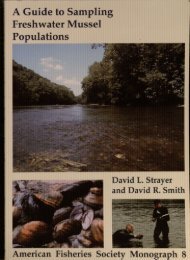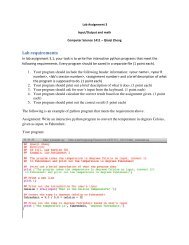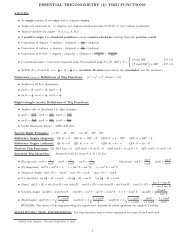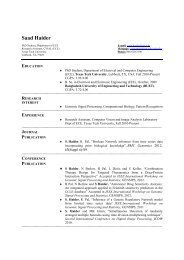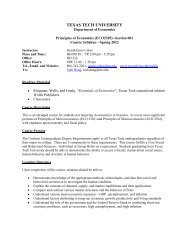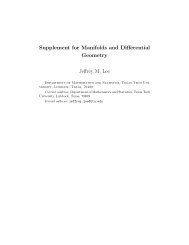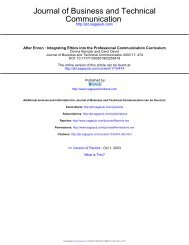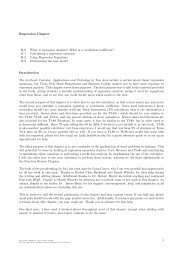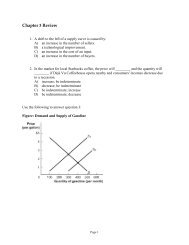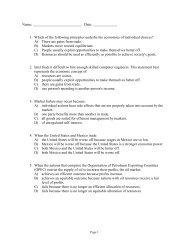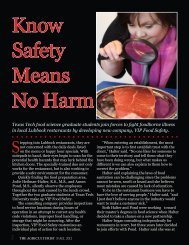Download - MyWeb - Texas Tech University
Download - MyWeb - Texas Tech University
Download - MyWeb - Texas Tech University
Create successful ePaper yourself
Turn your PDF publications into a flip-book with our unique Google optimized e-Paper software.
Preliminary Comments on the 2012 Ceramics Analysis<br />
Fred Valdez, Jr. and Brett A. Houk<br />
Introduction<br />
The 2012 season of the Chan Chich<br />
Archaeological Project (CCAP) marks a<br />
renewed research effort in a poorly understood<br />
prehistoric Maya region of northwest Belize.<br />
Investigations this season included research<br />
at Chan Chich and excavations at Kaxil<br />
Uinic, with ceramic finds from both sites. Six<br />
functionally complete complexes had been<br />
previously defined for the Chan Chich ceramic<br />
sequence (Valdez and Houk 2000). Ceramics<br />
analyzed and reported from the 1997–1999<br />
seasons along with some material from the<br />
2012 investigations serve to define the ceramic<br />
sequence herein presented. From the 2012<br />
assemblage, all of the ceramics from Kaxil Uinic<br />
were analyzed, but only the ceramics from one<br />
suboperation (CC-10-C) at Chan Chich were<br />
analyzed. The chronological data from the<br />
ceramic analysis have been incorporated into<br />
the Kaxil Uinic and Chan Chich Upper Plaza<br />
chapters in this report (Harris and Sisneros,<br />
this volume; Kelley et al., this volume). This<br />
chapter will serve as a baseline for future<br />
ceramic analysis of the CCAP at both Chan<br />
Chich and Kaxil Uinic.<br />
Valdez and Houk (2000:127) outlined the<br />
three major objectives that guided the original<br />
ceramic analysis for the CCAP and that remain<br />
of prime interest:<br />
First was the establishment of a<br />
chronological sequence for the site.<br />
This sequence also serves other<br />
research interests both internally<br />
(i.e., within the site) and externally<br />
to other sites and regions. A second<br />
interest of the ceramic analysis is its<br />
potential use concerning internal site<br />
ceramic patterns. In this respect the<br />
distribution of pottery within the site<br />
may reflect degrees or levels of social,<br />
economic, and political interaction<br />
within the community. This aspect of<br />
the analysis is still in progress. The<br />
analysis of ceramic patterning may also<br />
assist in determining initial settlement<br />
foci as well as changing settlement<br />
preferences over time. The third benefit<br />
of this analysis concerns correlating<br />
external interaction. Ceramics may be<br />
used to gage intersite and interregional<br />
trade, communication, and cultural<br />
evolutionary developments.<br />
Ceramic Analysis<br />
The analysis of the Chan Chich and Kaxil<br />
Uinic ceramic collections has been undertaken<br />
utilizing the long established type:variety-mode<br />
system of analysis (Adams 1971; Gifford 1976;<br />
Sabloff 1975; Smith et al. 1960). This system<br />
has been applied at most sites across the Maya<br />
lowlands including Altar de Sacrificios (Adams<br />
1971), Becan (Ball 1977), the Belize Valley<br />
(Gifford 1976), Cerros (Robertson-Freidel<br />
1980), Chan Chich (Valdez and Houk 2000),<br />
Valdez, Fred, Jr., and Brett A. Houk<br />
2012 Preliminary Comments on the Ceramics Analysis. In The 2012 Season of the Chan Chich Archaeological<br />
Project, edited by Brett A. Houk, pp. 65–72. Papers of the Chan Chich Archaeological Project, Number 6.<br />
Department of Sociology, Anthropology, and Social Work, <strong>Texas</strong> <strong>Tech</strong> <strong>University</strong>, Lubbock.<br />
65



